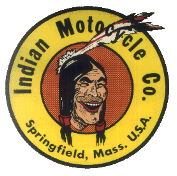In my opinion the oil level is perfect with 1/4 cup running out..
My view on that is the risk and cause of motor damage is substancially less with too much oil than with too little oil. The risk that the oil level gets too low is a lot greater when the level is on the margin. In the crankcase there is only (i haven't measured exactly) maybe 2dl (a cup) of oil that is churned constantly. The consumption isn't constant all the time, so the level is changing slightly all the time. The oil consumption can increase momentarily if the motor gets hotter than normal, say in a long hill or a stretch of faster than normal riding.
I have not experienced any problem at all with 1/2 to 1 dl (1/4-1/2 cup) extra in the crankcase.
I have experienced on a couple of occations how the engine reacted with too much oil when the pump wasn't adjusted properly. The motor got hot and hesitant, smoked and protested and when I emptied the crankcase the hot oil spurted out in a jet, I would guess some 3 maybe even 4 dl. The engine was fine after I drained it.
I also have experienced running with too little oil. On the hometrip from the Int. Indian meet in Scotland, I ran with a pack of Indian guys and in Holland they took, or maybe there wasn't any other choice, a 100 or 110km/h highway. The traffic was fierce with a lot of heavy traffic that averaged some 120-130 km/h and I had to ride a lot faster than my comfort.
Well the 4 lanes in my direction suddenly narrowed to 2 lanes and entered a kilometer long tunnel. The traffic was insane all around me. Just when I prepared to enter the tunnel I suddenly felt the engine hesitate and I could not do anything about it because there where no road shoulders, no pockets, nothing at all to stop safely on. A kilometer is bloody 1000 meters. It takes 40 seconds to pass in 90 km/h. I had just one choice to try to keep it going as long as possible. The motor became increasingly noisier and slower...After an eternity when I got out of the tunnel, sheered to the shoulder and let off the throttle, the motor struck stop, completly frosen, and the rear tire skid before I hit the clutch.
There was no time to drop the handlebar, bend down to turn on the petcock for the handpump, pull the pump handle, wait a while for the pump to fill with oil and push down the rod. That is insane to even think of risking that in heavy traffic, even more so with an engine on the brink of seize solid and a band of trailer trucks about 10 meters behind in 100km/h. The handpump was bad anyway.
I can tell you right away that having a bit too much oil is a lot less scary than having a bit too little oil...and way cheaper...


